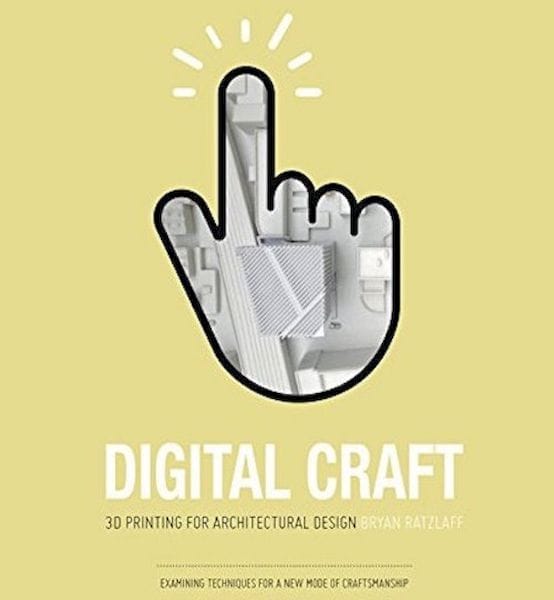
This week’s selection is the informative “Digital Craft: 3D Printing for Architectural Design” by author Bryan Ratzlaff.
While readers may feel that 3D printing is most often used for developing part prototypes (and it is), there are multiple other uses for the technology. One of them is architectural design.
A key step in the architectural process is the development of design models. These are physical representations of the proposed structure, typically used by the architectural firm to explain to clients the nature of the proposed structure in a more intimate way. The physical model allows the client to “browse” the structure by looking at it from different angles and “see” the concept in a far deeper way than simply looking at blueprints or even 2D renderings.
Thus for decades architects have built small tabletop models of their concepts. These have most often been done with traditional making tools, such as woodworking, plastics and other manually operated tools.
But 3D printing has changed all that. Like printing “impossible parts”, it’s also now possible to design very complex architectural structures and easily obtain a physical model by 3D printing the design. This can be done more quickly than traditional construction in many cases, particularly if the design is complex.
But how exactly should an architect make best use of 3D printing technology? This book attempts to describe this in some detail. Ratzlaff explains:
Digital Craft examines the relationship between the architect, the model and the 3D printer, creating a better understanding of how when integrated, these entities can lead to a refinement in the communication of architectural design with 3D printing.
Although 3D printing may be perceived as a complex process, there is no reason for a model not to reach its full potential from a lack of design engagement. Architects need not concern themselves with all the technicalities of 3D printing, but an understanding of the capabilities of the technology and the extent of what can be accomplished can increase a model’s value as a design and communication tool.
The book’s content was based on direct interviews of multiple practitioners of 3D printing in architecture.
If you’re an architect considering using 3D printing for your practice, you might want to check out this book.
Via Amazon

